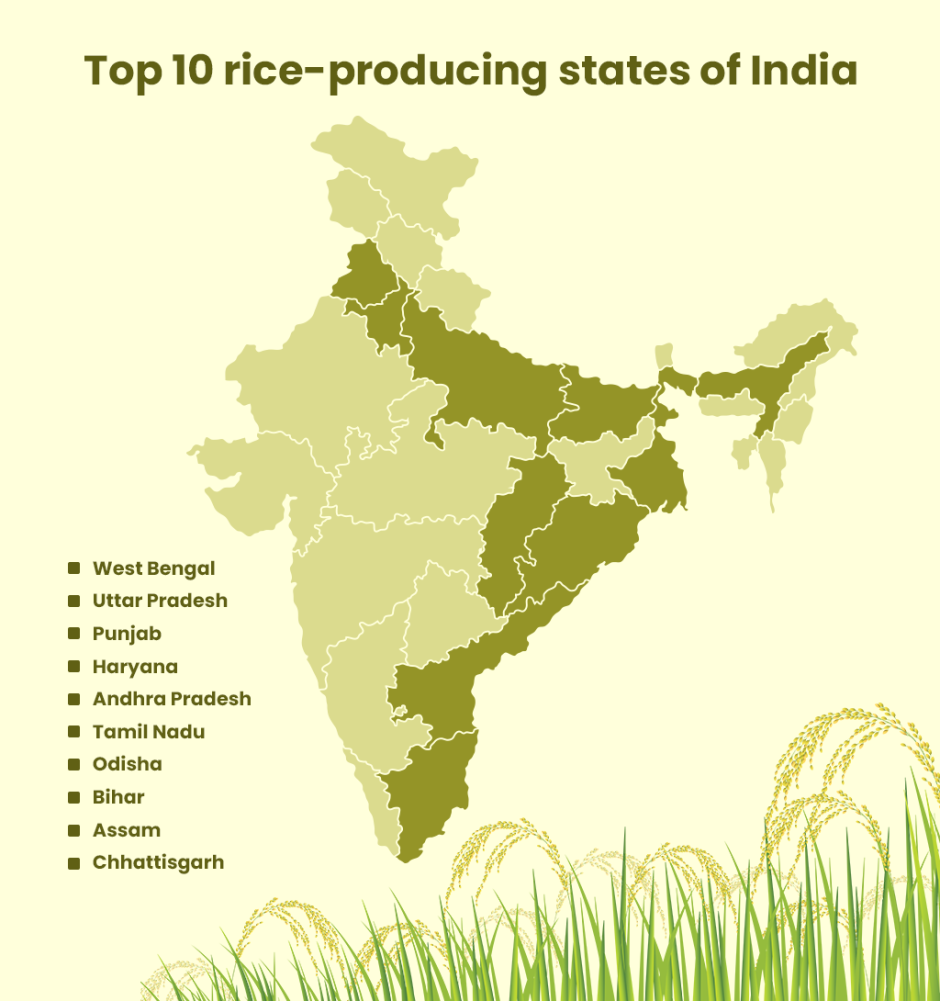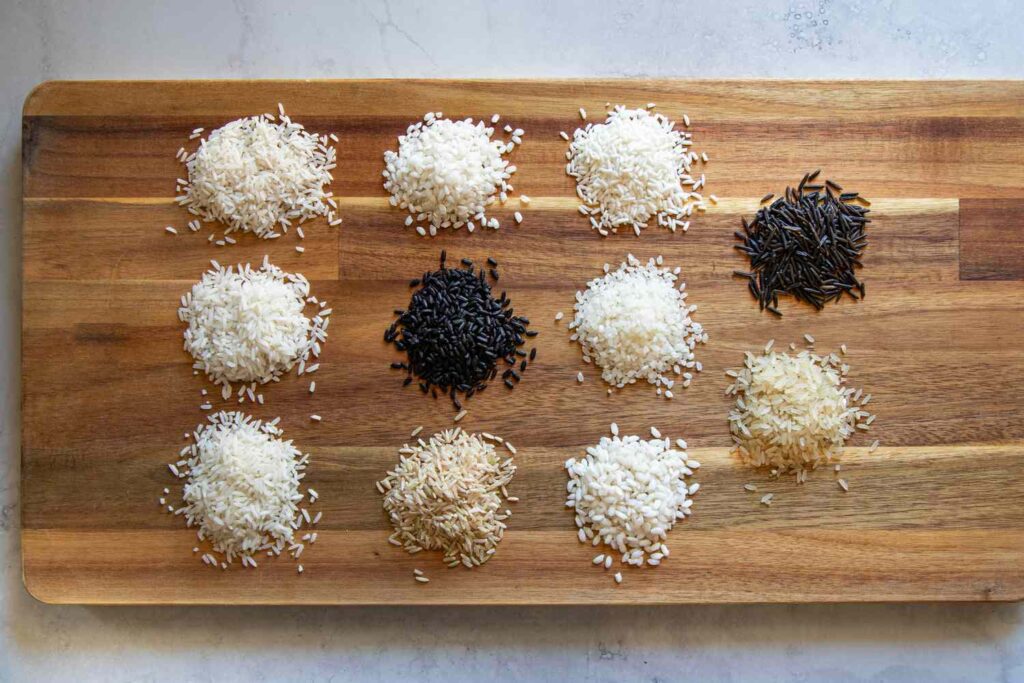Rice holds a sacred place in Indian culture and is a staple food. It is cultivated and consumed in various forms around the world. Throughout the Indian regions over 40,000 varieties of rice are grown. It has a wide array of flavours, textures, and uses. The diversity of rice varieties spans continents, with each type distinguished by unique characteristics catering to different culinary preferences and traditions.
Basmati Rice
Basmati rice. A premium variety renowned for its long grains, aromatic fragrance and delicate flavour. Perhaps the most famous Indian rice variety. It is akin to Champagne’s protected designation of origin in France. Basmati rice is regarded as a prestigious crop that can only carry the name if grown in a specific geographical region in India. Geographical regions of Basmati rice are in the states of Bihar, Punjab, Haryana, Himachal Pradesh, Delhi, Orissa and Kashmir. Historically the region of Dehradun is rated at the best quality for Basmati rice. The exclusive nature of balsamic rice stems from its cultivation, climate and soil composition. Basmati rice transforms any meal into a culinary masterpiece with its distinct nutty flavour and fluffy texture. Whether paired with fragrant spices in a biryani or served alongside creamy lentils in a comforting dal, Basmati rice elevates every dish it touches.

Jeera Rice
The aromatic Jeera rice, infused with the earthy essence of cumin seeds, adds a burst of flavour to any Indian feast. This fragrant rice variety is a staple in North Indian cuisine, where it is often served with rich gravies, kebabs, and succulent tandoori dishes. The subtle warmth of cumin enhances the taste of Jeera rice, making it a beloved accompaniment for festive celebrations and everyday dinners alike.
Meanwhile, the vibrant red rice of Kerala, known as Matta rice or Rosematta rice, is a powerhouse of nutrients and antioxidants. With its distinctive red hue and nutty flavour, Matta rice is a popular choice for traditional dishes like appam, puttu, and biryani in the southern state of Kerala. Rich in fibre and beneficial compounds, Matta rice offers a healthful alternative to white rice, appealing to modern consumers seeking nutritious meal options.

In addition to these well-known varieties above, India boasts a myriad of indigenous rice types, each with its own story, heritage, and culinary significance. From the fragrant Gobindobhog rice of West Bengal to the resilient Mahsuri rice of Tamil Nadu, the diverse range of Indian rice reflects the country’s agrarian heritage and culinary creativity.
As we embark on a culinary journey through the heartland of India, exploring the myriad flavors and textures of its beloved rice varieties, we discover not just a staple food but a symbol of unity, diversity, and tradition. Indian rice epitomizes the essence of Indian cuisine, bridging regional differences and celebrating the rich tapestry of flavours that define this vibrant culinary landscape.
In addition to these well-known varieties above, India boasts a myriad of indigenous rice types, each with its own story, heritage, and culinary significance. From the fragrant Gobindobhog rice of West Bengal to the resilient Mahsuri rice of Tamil Nadu, the diverse range of Indian rice reflects the country’s agrarian heritage and culinary creativity.
As we embark on a culinary journey through the heartland of India, exploring the myriad flavors and textures of its beloved rice varieties, we discover not just a staple food but a symbol of unity, diversity, and tradition. Indian rice epitomizes the essence of Indian cuisine, bridging regional differences and celebrating the rich tapestry of flavours that define this vibrant culinary landscape.


